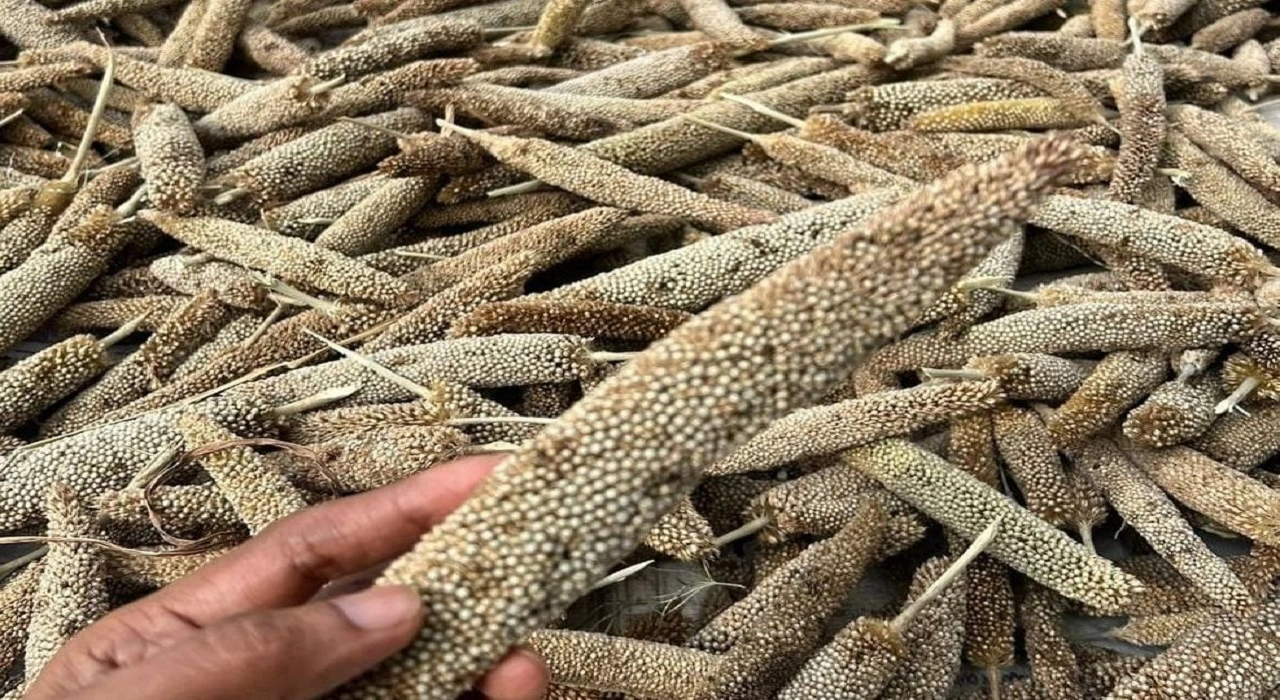Introduction
In today’s world of health conscious eating, traditional grains are making a big comeback. One such grain is bajra, also known as pearl millet. Grown widely in India and Africa, bajra is one of the oldest cultivated grains, prized for its high nutritional value and resilience in arid climates.
If you’re looking for a wholesome, gluten free, and nutrient-packed grain to include in your diet, bajra is an excellent choice. In this article, we’ll explore bajra benefits and nutrition to help you understand why this humble millet deserves a place in your kitchen.
What is Bajra?
Bajra is a type of millet that comes in small, round grains and has a slightly nutty flavor. It is usually ground into flour to make roti (flatbread), khichdi, porridge, or used in combination with other grains. It is gluten free and easy to digest, making it ideal for people with gluten sensitivity or digestive issues.

Bajra Nutrition at a Glance
Let’s begin by understanding the nutritional profile of bajra (per 100 grams of uncooked grains):
- Calories: 378 kcal
- Protein: 11.6 g
- Carbohydrates: 67 g
- Dietary Fiber: 8.5 g
- Fat: 4.2 g
- Iron: 8 mg
- Magnesium: 137 mg
- Phosphorus: 296 mg
- Calcium: 42 mg
This nutrient-rich grain is a natural source of iron, magnesium, fiber, and essential amino acids, making it a perfect choice for building a strong and healthy body.
Top 9 Bajra Benefits You Should Know
1. Supports Heart Health
One of the standout bajra benefits and nutrition highlights is its ability to promote heart health. Bajra is high in magnesium and potassium, which help regulate blood pressure and improve heart function. The dietary fiber also helps reduce bad cholesterol levels.
2. Helps in Managing Diabetes
Bajra has a low glycemic index, which means it releases sugar slowly into the blood. This helps maintain stable blood sugar levels and is especially beneficial for people with type 2 diabetes.
3. Aids Digestion
Bajra is a good source of insoluble fiber that promotes healthy digestion. It keeps the digestive tract clean, prevents constipation, and supports a healthy gut microbiome.
4. Boosts Immunity
Thanks to its rich iron, zinc, and antioxidant content, bajra helps boost the immune system. These nutrients help the body fight infections, improve oxygen circulation, and support overall well-being.
5. Promotes Weight Loss
If you’re on a weight loss journey, bajra can be a great companion. It keeps you fuller for longer, reduces hunger pangs, and supports metabolism making it easier to manage weight in a healthy way.
6. Strengthens Bones
The combination of phosphorus, calcium, and magnesium in bajra helps build and maintain strong bones. Regular consumption can prevent bone-related issues like osteoporosis, especially in women and the elderly.
7. Good for Skin and Hair
Among bajra benefits and nutrition, the beauty benefits are often overlooked. Bajra contains protein, B vitamins, and antioxidants that promote healthy skin and strong hair growth. It keeps the skin radiant and may help delay signs of aging.
8. Gluten-Free Option for Sensitive Individuals
For those with gluten intolerance or celiac disease, bajra is a wonderful alternative to wheat-based foods. It provides essential nutrients without triggering digestive discomfort.
9. Provides Energy and Stamina
bajra benefits and nutrition is a slow-digesting complex carbohydrate, which means it provides sustained energy throughout the day. It’s a great food for athletes, growing children, and anyone with an active lifestyle.
How to Include Bajra in Your Diet
With all these bajra benefits and nutrition, the next step is knowing how to enjoy it. Here are some easy and tasty ways to add bajra to your daily meals:
- Bajra Roti: A traditional Indian flatbread, best served with curd or vegetables.
- Bajra Khichdi: A wholesome and comforting dish made with bajra, lentils, and vegetables.
- Bajra Porridge: A warm, nourishing breakfast option, especially good in winter.
- Bajra Upma: A savory dish cooked with spices and veggies, perfect for a light lunch.
- Bajra Cookies or Muffins: For those who enjoy healthy baking!
Who Should Avoid Bajra?
While bajra benefits and nutrition is highly nutritious, people with kidney issues or those advised to follow a low-potassium or low-phosphorus diet should consult a doctor before consuming it regularly. Also, since bajra is high in fiber, those with digestive disorders like IBS should start with small quantities.
Final Thoughts
Bajra benefits and nutrition make it a true superfood that can be easily incorporated into modern diets. From improving heart health to aiding digestion and boosting immunity, bajra checks all the boxes for a wholesome grain. Whether you’re trying to lose weight, eat healthier, or simply explore traditional Indian grains, bajra is a tasty and nutritious option you can trust.
Give this age-old grain a chance your body will thank you for it!
FAQs on Bajra Benefits and Nutrition
Q1. Is bajra good for weight loss?
Yes, bajra benefits and nutrition is rich in fiber and protein, which helps keep you full for longer, reducing the urge to snack and promoting healthy weight loss.
Q2. Can diabetics eat bajra daily?
Absolutely! Bajra has a low glycemic index and helps regulate blood sugar levels, making it suitable for diabetics when consumed in moderation.
Q3. How much bajra should I eat in a day?
1 to 2 servings of bajra (like two rotis or a small bowl of khichdi) a day is a healthy amount for most people. Always balance it with vegetables and protein.
Q4. Is bajra good in summer?
While bajra is warming in nature, you can still eat it in summer in moderate amounts. Pair it with cooling foods like curd or buttermilk.
Q5. Can I eat bajra if I have a gluten allergy?
Yes, bajra benefits and nutrition is naturally gluten-free and safe for people with celiac disease or gluten sensitivity.